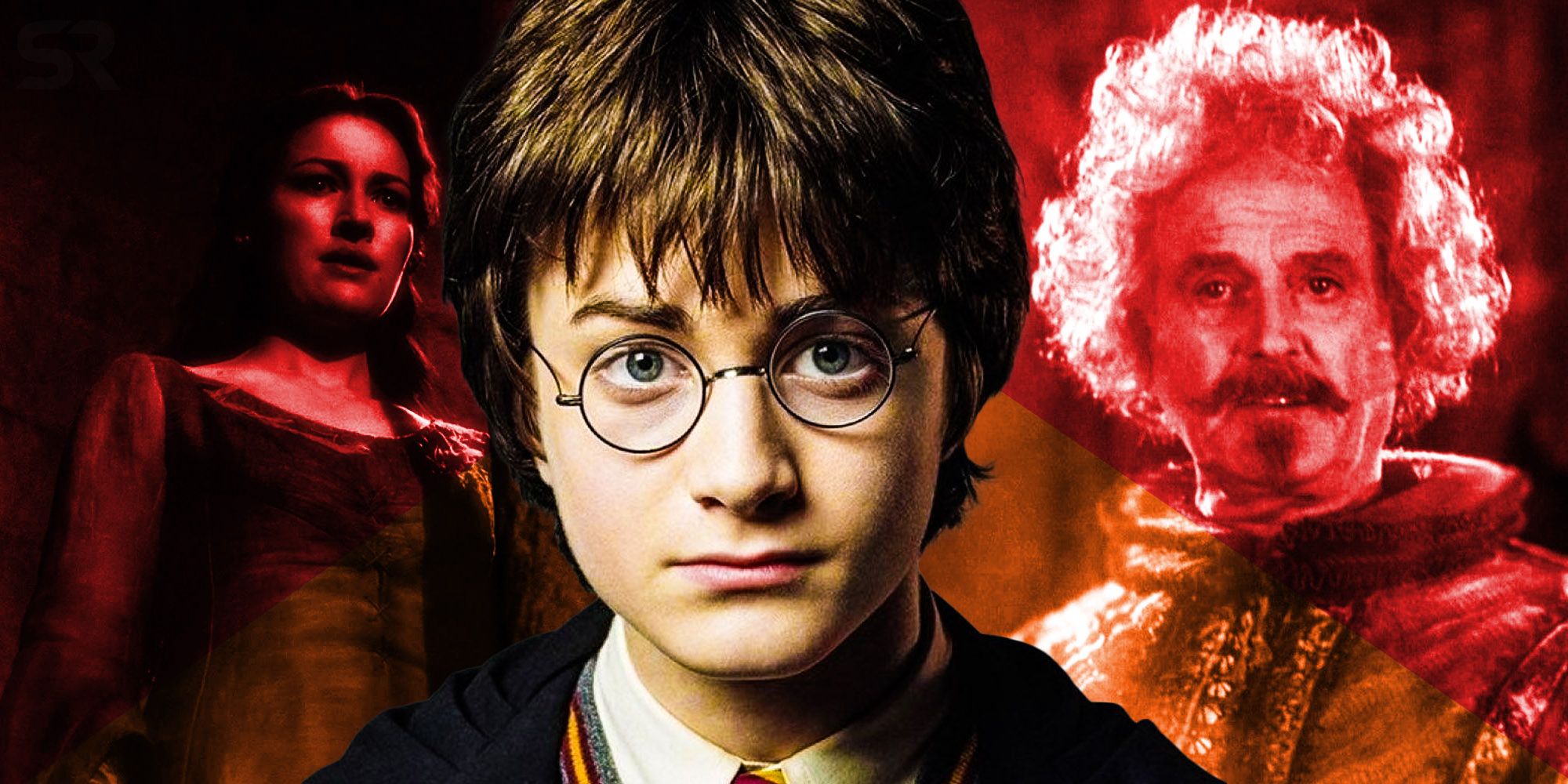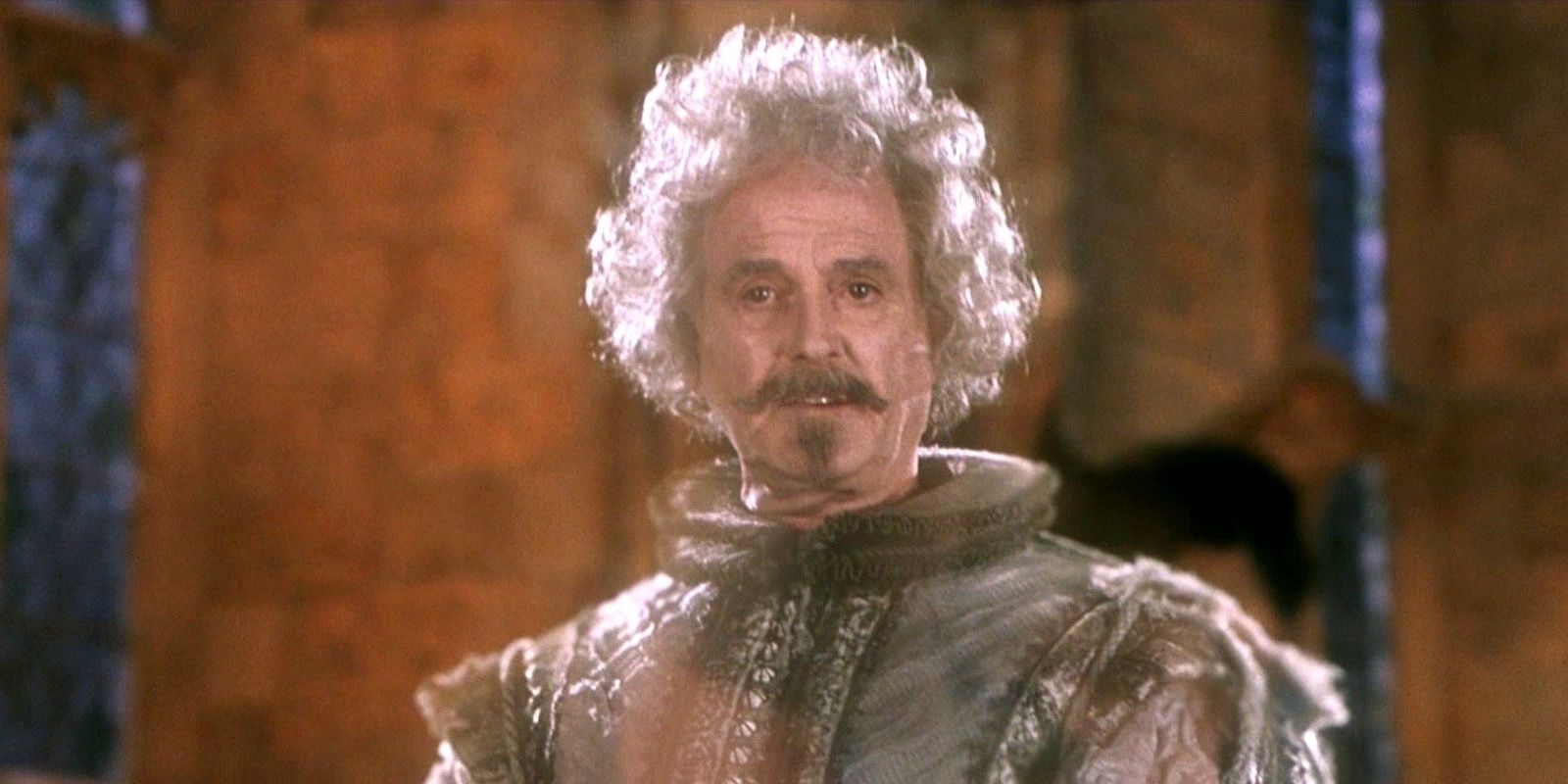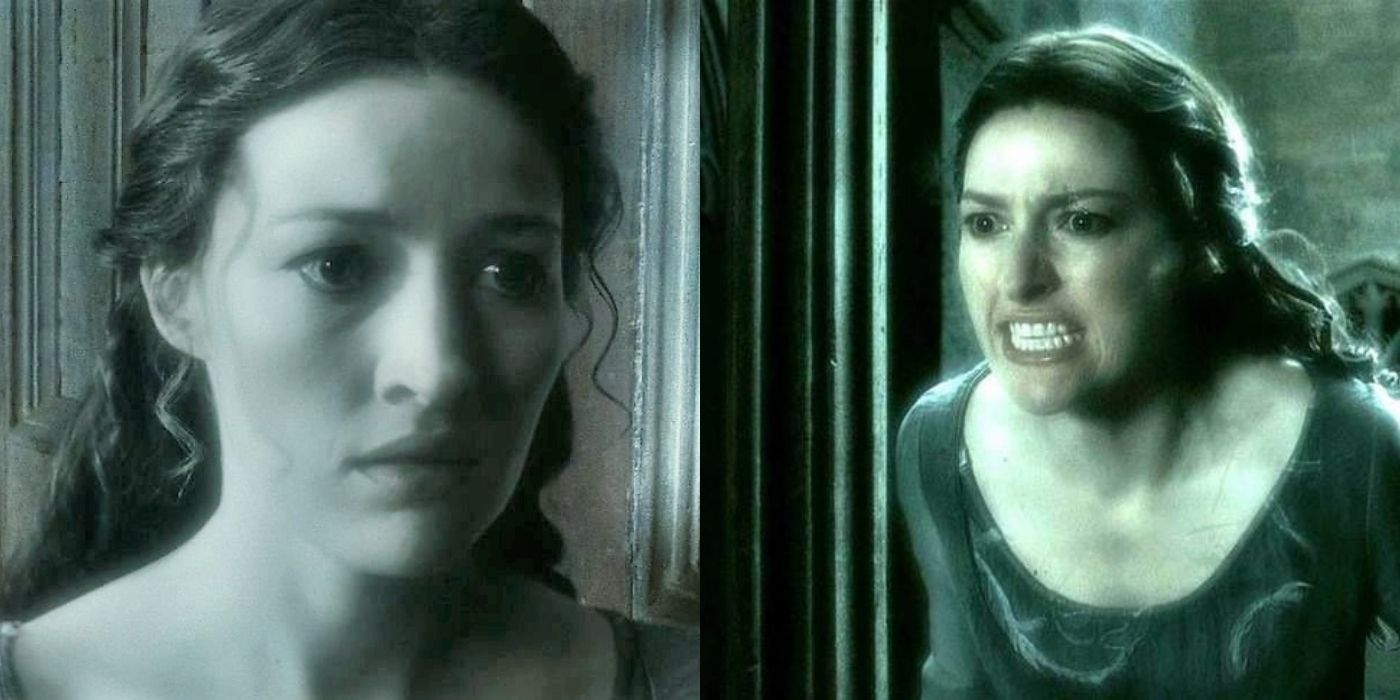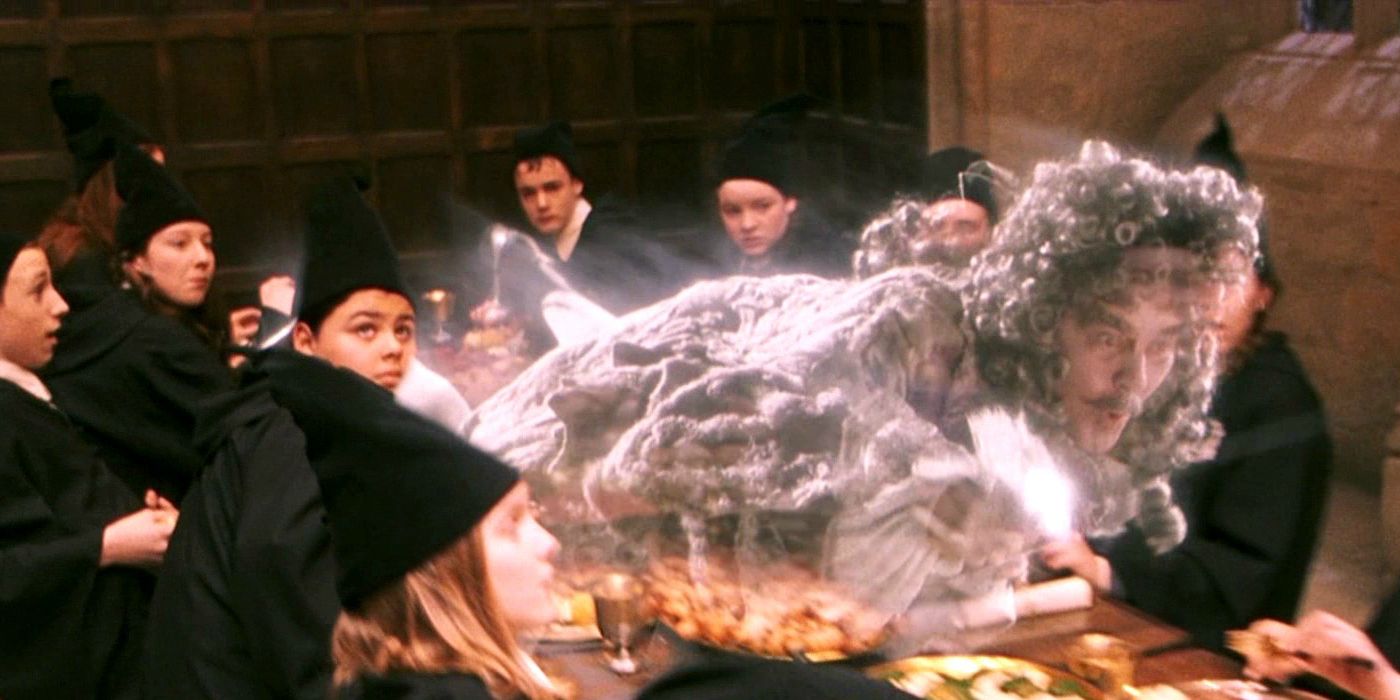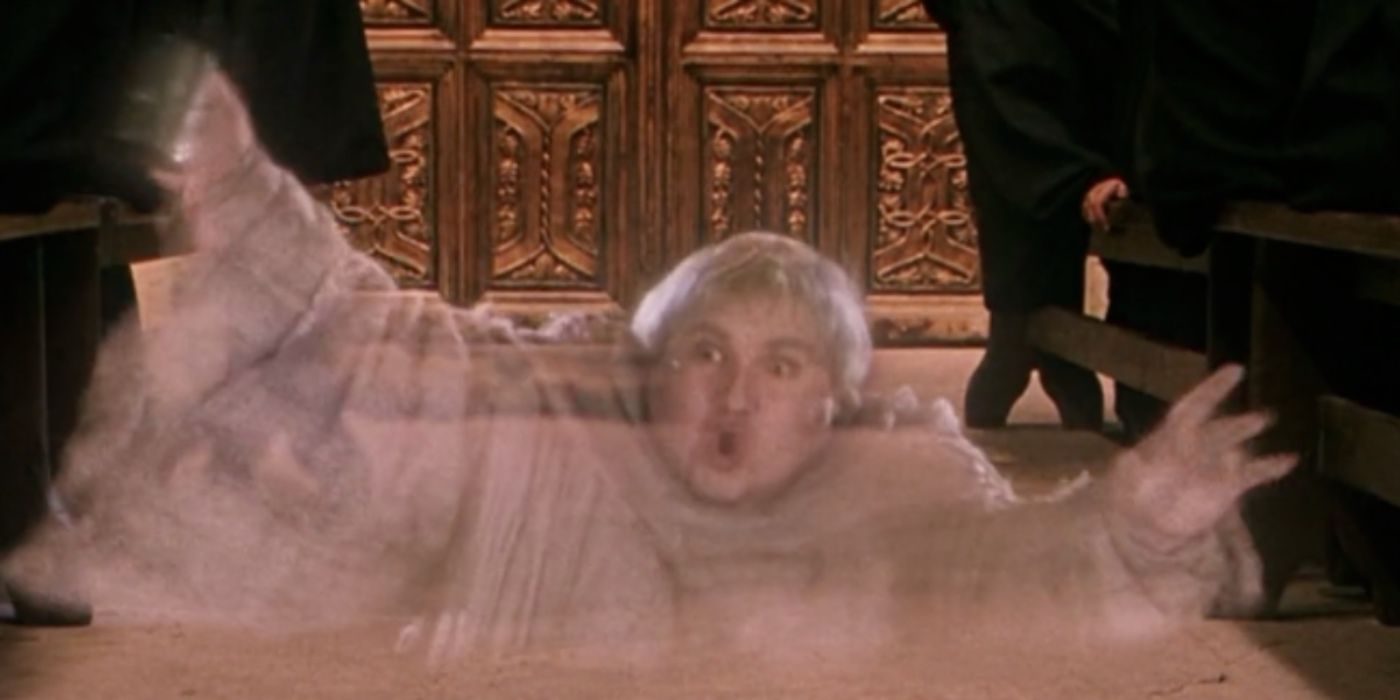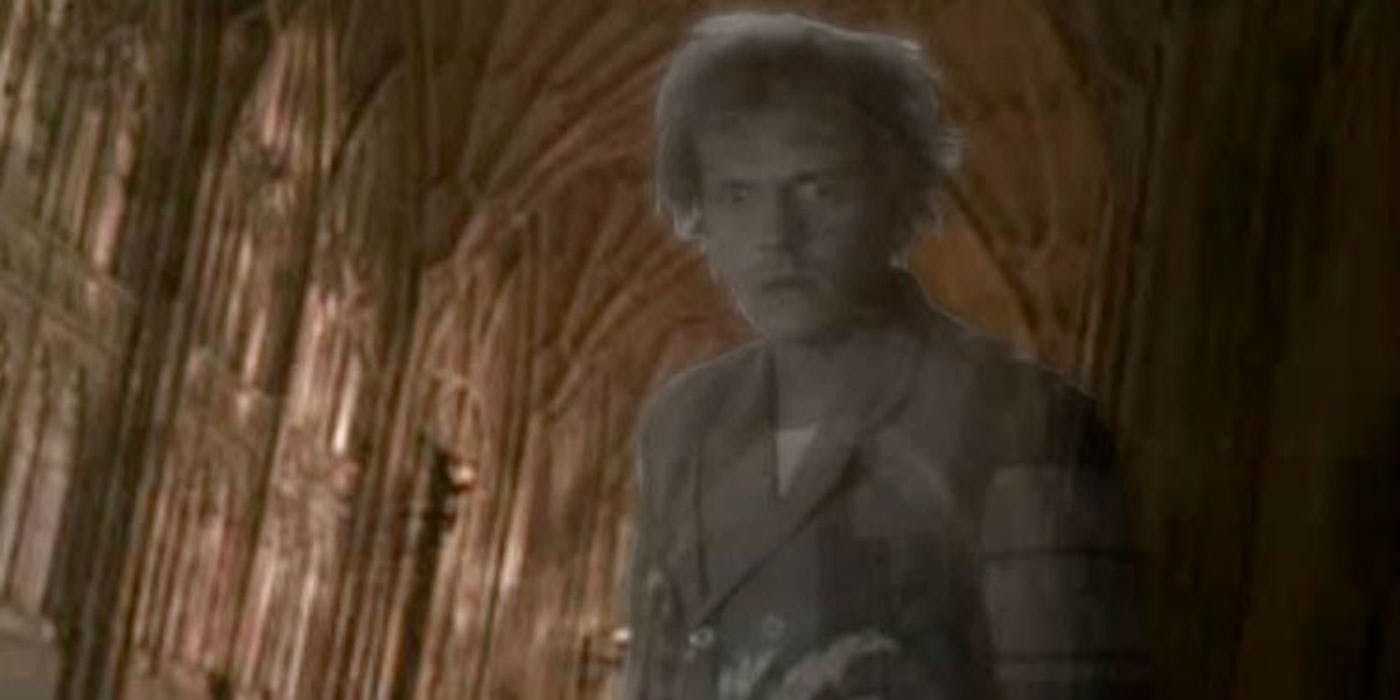The Hogwarts ghosts in the Harry Potter movies each contribute to an important part of the school, but unfortunately, the tragic contexts for their continued presence at Hogwarts were excluded. The first Harry Potter book was published in 1997 to worldwide critical acclaim, and the books had much more time and space to explore a plethora of Hogwarts characters and backstories. However, the Harry Potter movies had a maximum of approximately 2 1/2 hours each to get across an entire book. With the Harry Potter reboot coming as a Max series, with a season for each book, there is a chance much more of the books will play out in the stories.
The Hogwarts ghosts were present in the novels, but not so instrumental to moving the story forward that movie time could be allocated to their pasts. Each Hogwarts House has a ghost, but the movies only truly introduce Gryffindor’s Nearly-Headless Nick and Ravenclaw’s Grey Lady. Even then, their backstories and significance to Hogwarts’s history really aren’t explored aside from Sir Nicholas’s lost head as a gag and Helena Ravenclaw’s parentage when finding the lost diadem. The four ghosts of the Houses are Sir Nicholas (Gryffindor), the Grey Lady (Ravenclaw), the Bloody Baron (Slytherin), and the Fat Friar (Hufflepuff), with one estranged poltergeist annoying them all.
Nearly Headless Nick (Gryffindor)
How did Nearly Headless Nick nearly lose his head? His real name is Sir Nicholas de Mimsy-Porpington, and he was executed by a (botched) beheading on Halloween Day 1492. Ever since then, he has been one of the Hogwarts ghosts in Gryffindor. Sir Nicholas was only featured in the first two Harry Potter movies, where he was one of the few to be petrified after looking into the basilisk’s eyes. The Harry Potter movies mention his being a knight, having not been fully decapitated, and that he was sorted into Gryffindor at Hogwarts, but not much else was translated about him from the books.
The Harry Potter novels reveal that before his death, Nicholas was frequently associated with muggles which led him to be knighted by King Henry II. The night before Halloween in 1492, Sir Nicholas was walking in the park when he met a muggle woman, Lady Grieve, who also happened to be in Henry II’s court. He tried to use a spell to help straighten her teeth, but it backfired and made her grow a tusk instead. There was immediate outrage at his mistake, leading him to be jailed and sentenced to death with his wizarding wand confiscated.
When led to the block by the executioner in the Harry Potter books, Sir Nicholas apparently became an emotional wreck as he was overcome with remorse and fear. The executioner’s ax was unsharpened, so it took 45 swings of the ax to kill Nicholas, and his head was never fully severed. As with most wizard ghosts, Sir Nicholas remained among the living because he feared death. He spent the rest of his afterlife at Hogwarts, becoming a source of entertainment for Gryffindor students. During Harry’s first year, Sir Nicholas and Hufflepuff’s ghost, Fat Friar, argued about if Hogwarts’s mischievous poltergeist, Peeves, should be allowed to attend the start-of-term feast.
Nicholas was adamant that Peeves gave ghosts a bad name, but the Fat Friar believed he should have a second chance. Nicholas also struggled with the ghost group the Headless Hunt, who wouldn’t admit him because his head wasn’t completely decapitated. Harry Potter and the Chamber of Secrets leaves most of this out, including the Death Day Party he threw where he became embarrassed when guests laughed at his only partly severed head.
The Grey Lady/Helena Ravenclaw (Ravenclaw)
Ravenclaw’s Grey Lady was revealed to be Helena Ravenclaw, daughter of Hogwarts founder Rowena Ravenclaw. Not much is known about the Hogwarts founders in the movies besides artifacts by Godric Gryffindor and the sinister legacy of Salazar Slytherin, so Helena’s contribution is the closest the movies get to a backstory on Rowena Ravenclaw. In Harry Potter and the Deathly Hallows Part 2, Helena is how Harry finds Rowena’s lost diadem that had become one of Voldemort’s seven Horcruxes. She resists telling him, as Tom Riddle “defiled” it years before. She eventually gives in and tells him a riddle that leads him to understand it is in the Room of Requirement.
Helena Ravenclaw has an incredibly fascinating backstory that the Harry Potter movies unfortunately excluded. Helena was apparently envious of her mother’s success, so she stole her mother’s diadem which was said to increase its wearer’s wisdom and retreated to Albania. When Rowena was on her deathbed, she sent the Bloody Baron, who was unrequitedly in love with Helena, to find her. Helena tried to hide from him in a forest, and once he was near she hid the diadem in a hollow tree. When she refused to come with him, he murdered her and subsequently killed himself. After death, she and the Baron returned to the castle as Hogwarts ghosts.
Considering she was an integral part of defeating Voldemort and destroying his Horcruxes, it’s surprising the Harry Potter movies didn’t expand on her story. The movies reveal she was charmed by Tom Riddle and revealed the location of the diadem to her, but they don’t reveal he had to travel to Albania because she was the one who stole it. Her backstory also explains her ghostly sullenness due to remorse over stealing her mother’s diadem and giving it to Voldemort, plus being murdered by a ghost also highly present at Hogwarts.
The Bloody Baron (Slytherin)
The Bloody Baron has no dialogue in any of the Harry Potter films and is only seen in small cuts during Harry Potter and the Sorcerer’s Stone as he flies around the Slytherin in the Great Hall. His lack of a presence in the movies is a tragedy considering his intriguing backstory and intense connection to Helena Ravenclaw, who was significant in Harry Potter and the Deathly Hallows Part 2.
The Bloody Baron attended Hogwarts at the time of its founders, where he was sorted into Slytherin House. After school, he fell in love with Hogwarts founder Rowena Ravenclaw’s daughter Helena, but she never reciprocated his love. When Helena ran away to Albania, Rowena was too ill to follow her and sent the Baron instead. When he found her in a forest, he attempted to convince her to return with him, but she refused. In an act of rage, the Baron stabbed and killed Helena, then in his remorse used the same weapon to commit suicide.
After death, the Baron and Helena returned to the school as Hogwarts ghosts. The Bloody Baron continued to carry chains as a sign of penance and still had Helena’s blood stained on his outfit, though only he and Helena knew it was her blood. Although from rival Houses, the Baron seemed to get along with Sir Nicholas. When arguing over Peeves’s attendance at the start-of-term feast, they sided against the other Hogwarts ghosts in barring him. Sir Nicholas also tends to ask the Bloody Baron to stop Peeves’s mischief, as the Baron is the only ghost with influence over him.
The Fat Friar (Hufflepuff)
The Fat Friar’s real name and era at Hogwarts are unknown, but he was sorted into Hufflepuff and taught by founder Helga Hufflepuff. The only time the Fat Friar is seen in the movies is when he floats with his top half out of the floor in Harry Potter and the Sorcerer’s Stone during the start-of-term feast. Nothing of his backstory is revealed in the movies or books, but the Harry Potter website Pottermore gives an interesting account of what led him to stay in Hogwarts after his death. After his time at Hogwarts, the Fat Friar went on to join the clergy in a mendicant religious order.
He was apparently a kind man, who would heal muggles and dedicated his life to serving charitable causes. The Fat Friar was murdered by senior members of the clergy who found it suspicious that he could cure the pox by pointing a stick (wand) at the sick, and would often inexplicably pull rabbits out of the church’s communion cup. He apparently cannot move on from his death because he was tragically murdered and regrets that he never became a cardinal in the Catholic Church. Despite this, the Fat Friar tends to have a joyful demeanor in the Harry Potter movies and books.
Peeves (No House)
Nearly Headless Nick revealed that Peeves is not one of the Hogwarts ghosts. However, he is a poltergeist who lives in Hogwarts Castle and is just as much a part of the lore as any of the ghosts who interact with the students and professors at the institute. Also, since he is a poltergeist, that means he was never a living being - and therefore he was never a student of Hogwarts and is not a part of any of the houses. Instead, humorously, the residents of Hogwarts simply maintain that Peeves came with the castle when the Wizarding World built it to use as a school for wizardry.
While most of the ghosts just wander around the school and go about their after-life business, Peeves is a malevolent spirit. He races through the school, knowing over tables, toppling over statues, and often terrifying students and professors alike. However, at the same time, he was very protective of Hogwarts as a whole. This was evident when Dolores Umbridge took over the school, resulting in Fred and George Weasley leaving, and Peeves saluted them as they left. Peeves even joined the fight in the Battle of Hogwarts on the side of Harry Potter against Voldemort and his Death Eaters.

